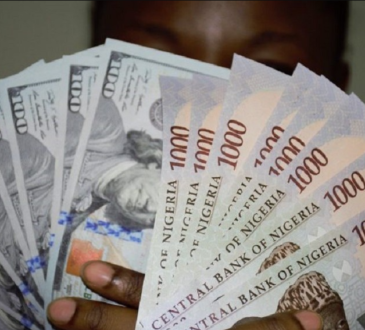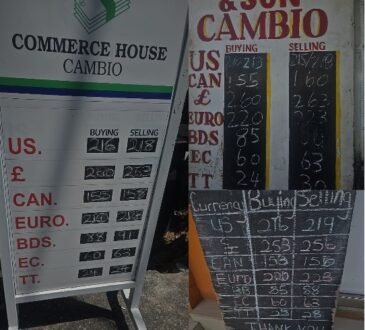Over the last few days, the sudden volatility in the markets has resulted in clients, friends and family (especially my wife) all wondering what just happened, and more important, what happens next. For sure everyone by now has read that one of the culprits was the action by the Bank of Japan (BOJ) last week to raise interest rates by about 0.25%. But how does that small increase in rates result in trillions of wealth being lost?
In this note, I will connect the dots in the simplest possible way. I have been writing about the carry trade and its connection to volatility for many years now (see my paper on the topic published in the Journal of Fixed Income here which explains the connection between currency carry and currency volatility), and also the impact of negative carry on investments here.
Let’s start with the big picture. The Japanese are an aging country, and they have a monetary printing press. Since their real estate bubble burst many years ago after a boom and bust, deflation set in. To counter this deflation, the BOJ slashed interest rates to zero and then went further, slashing rates to negative. Yes, the now discredited economic dogma of paying money for the privilege of lending — i.e., negative interest rates — was a Japanese invention. The European Central Bank (ECB), also adopted it a few years ago. As I have written before, these academically trained central bankers opined that if low interest rates were stimulative, then negative interest rates would be even more stimulative. Of course, with an explosion in inflation globally the weak structures built on this dogma have come crashing down.
So, when interest rates in Japan fell below zero, Japanese investors, both institutions like the Japan Post Bank and GPIF (their sovereign wealth fund), and the proverbial Mrs. Watanabe decided to get a better, higher yield in overseas investments. It first started with the buying of hundreds of billions of bonds in the US, Europe, Australia, Mexico, Brazil…you name the place, and the Japanese were buying bonds. And why not? They had a printing press with which they printed yen, and then took the yen to the rest of the world to buy bonds that would pay some, any interest. Something is better than nothing. And what an amazing thing this was (is). Print funny money, buy other people’s bonds; i.e., extract from them to pay you real money (dollars, euros, pesos, real, whatever) for eternity. What would you do if you could write down “billion [your name here]” and went to a gullible foreign borrower and gave them your piece of paper in exchange for them to pay you with their piece of paper which you could then spend? Right, this is exactly what happens when the yen is exchanged for dollars, euros, pesos, reals…
Yen that lays a golden egg via the Yen Carry trade funding global asset purchases
But of course, this is risky because the bonds that the Japanese owned were in foreign currency. So for example, if the dollar weakened a lot, then the interest income, which is in dollars, would not be enough to make up for the loss in value due to currency depreciation. Currency hedging to the rescue. So the way you keep your investment safe from foreign currency depreciation is to use the forward currency or options market to hedge. In other words, to hedge a long dollar bond position, you can sell the dollar in the forward currency market. Or you can buy a put option on the dollar against the yen. But things are not that simple, because the exchange rate at which you can hedge in the forward market depends on the difference between the interest rate in the dollar and the interest rate in the yen, and an adjustment called the “cross-currency basis swap”, which is a measure of the demand and supply mismatch. But wait, with yen rates very low, and dollar rates much higher, the cost of the hedging is proportional to the difference between the dollar rates and yen rates. So, if you hedge, you will lose all the “carry” that you get from buying the dollar bond in the first place. Ok, maybe you can hedge by using a currency put option, but now you are paying both the currency hedge cost due to the interest rate differential and basis swap, and also the option’s volatility premium. Quite expensive.
The solution? Don’t currency hedge! Yes, I say this partly in jest, because not hedging the currency risk is well…risky. But guess what? This is exactly what the Japanese investors did. They bought a boatload of bonds in foreign countries, as well as other assets; e.g. mega-cap stocks (think “NVDA”) because a couple of mouse clicks can get you dollar assets with your funny money. Think about it again — suppose you could buy billions of NVDA with a “billion [your name here]”, wouldn’t you? I would.
Ok, so now we are caught up to the present day. With inflation in Japan surging, the BOJ knows that they cannot fight inflation by raising interest rates because this whole house of card comes down. Interest rates go up, money comes back into Japan to get this yield, and results in foreign assets being sold, making the owners in Japan (both institutions and individuals) really mad for making them lose money. So the BOJ keeps interest rates and bond yields low by buying up all the bonds that their government issues. One hand borrowing, the other hand lending. I should mention that the BOJ has also been a pioneer in buying their stock market via ETFs; by extension the Japanese government is the single largest owner of the Japanese stock market.
One chief of the BOJ retires and makes it the problem of the next chief. If inflation is high and interest rates are low the currency depreciates. Which is what happened to the yen as it lost over 50% of its value over a decade (most of it in the last couple of years). Yes, at some point you get found out for printing all that funny money. So the government spends tens of billions selling dollars and buying yen in currency “interventions”. But note if you are selling dollars (“real” money) and buying back yen (“funny money”), at some point you will run out of real money, and what if the world does not let you have any more real money for funny money? So last week the new chief finally does what the law of supply and demand says he should – he raises interest rates by a measly 0.25% or so, and also says that the BOJ won’t be buying billions of their own bonds and stocks. Also, with the US economy slowing down and unemployment rising, the Fed signals a possible rate cut, which would reduce the “carry” on future bond purchases. The apple cart tips over. All hell breaks loose. The Japanese stock market craters 12% in a day. The sudden fall in the Japanese stock market results in a spike in equity volatility, and since markets around the globe are inter-connected, with many different types of “carry trades” across geographies and instruments, the volatility of many of these trades goes up. When volatility goes up, the carry trade, which assumes persistently low volatility, suffers regardless of how and where it is implemented. Option selling strategies, today done via many retail ETFs (for income generation) gets hurt as volatility rises, and if done using leverage, results in margin calls. This because the margin amount required is directly correlated to the level of volatility. So small increase in Japanese rates results in volatility across the globe rising. The final nail in the coffin is the important role that volatility plays not just as an indicator, but as a signal. Many systematic strategies, such as volatility targeting, trend-following, risk-parity are all sized and scaled using volatility as an input. So when volatility rises, all of these strategies have to de-risk, all at the same time. Contagion!
The deputy chief comes out and tries to back up the freight train by suggesting that they will not raise rates if the markets are volatile. Hmm…so they have to raise rates to meet basic laws of supply and demand, but they won’t do so if the market does not allow them to do so. Let’s think about it for a moment — will markets ever want policy to be tighter; i.e. rates to be higher in the short term? What about the next time they try to raise rates — wouldn’t the tantrum be bigger?
So where does this leave us?
As a physicist I believe in the laws of nature, the fundamental one being gravity. Economists and lawyers (who compose our central banks), and many of whom are my good friends, seem to think that they can defy the laws of financial gravity. If inflation is rising in Japan, rates have to go up, and they have to stop buying bonds and pumping money. This will inevitably result in the yen getting stronger. Across the ocean, the US is faced with our own problem — the US has an inverted yield curve with short rates much higher than long rates, and the Mag-7 driven euphoria beginning to come down to earth. When short rates are higher than long rates, there is negative carry everywhere, and it does not pay to borrow short term to lend long term, which is the backbone of market functioning. So the Fed has to normalize the yield curve; the Fed has to cut rates, and cut it will, though it will fight tooth and nail in the press before it does so. Rising Japanese rates, falling US rates, both consequences of the laws of supply and demand of money (which show up as inflation and deflation), are just gravity acting. And gravity will win in the end.
There is a big difference between the regimes of negative rates, zero rates and positive rates. It’s not a matter of magnitude; it’s a matter of the sign (minus, zero, plus). These are different types of worlds, regimes if you will. As Japanese rates go up, US rates fall, the yen will rally, the dollar will weaken, and this will cause loss in value of holdings of foreign assets for Japanese holders. Yes, they may want to hedge, but currency volatility has risen so sharply that for many it probably does not make much economic sense to hedge with options now.
For those who have followed the plot so far, the consequences are simple — get out of the way of the carry unwind driven asset liquidation tsunami. If you think the last week was crazy, you ain’t seen nothin’ yet. It’s all up to the central banks now, but it would be safe to say they are caught between a rock and a hard place, and the rational thing to do is not the thing they are likely to do — but market forces will force them to do so. Volatility is here to stay for a while. As one of my old trader buddies used to say: “ the road to hell is paved with carry”.





